The Adventure Begins...
It's that time of year... Time to see the snow! Bunnaford, Sue, and Paul head 111 miles to the east to visit the aerial tramway in Palm Springs. The day begins with a call to Bunnaford... Does she get the signal???

Bunny was up and ready at 9:30am... Jammie free

An easy drive...
Two hours and we were there
Did you know? - Snow is a type of precipitation within the Earth's atmosphere in the form of crystalline water ice, consisting of a multitude of snowflakes that fall from clouds. Since snow is composed of small ice particles, it is a granular material. It has an open and therefore soft structure, unless packed by external pressure. Snowflakes come in a variety of sizes and shapes. Types which fall in the form of a ball due to melting and refreezing, rather than a flake, are known as graupel, with ice pellets and snow grains as examples of graupel. Snowfall amount and its related liquid equivalent precipitation amount are determined using a variety of different rain gauges.

There is Mount San Jacinto
Did You Know? - San Jacinto Peak, 10,834 feet (3,302 m), is the highest peak of the San Jacinto Mountains, and of Riverside County, California. It lies within Mount San Jacinto State Park. Naturalist John Muir wrote of San Jacinto Peak, "The view from San Jacinto is the most sublime spectacle to be found anywhere on this earth!"
San Jacinto Peak is one of the most topographically prominent peaks in the United States. It is ranked 6th among peaks in the 48 contiguous states.
We Are There

The only tower reachable by roads! Tower height 227 feet

I think it moved while we were there
Did You Know? - Mount San Jacinto is one of the "Three Saints," a name occasionally used to describe the high points of the three tallest mountain ranges in Southern California: San Jacinto Peak, Mount San Gorgonio (high point of the San Bernardino Mountains), and Mount San Antonio (high point of the San Gabriel Mountains).

Interesting windows.. Out path today is directly up the center of the "V"
We Are About To Board The Tram

"I am NOT scared!!!
It was interesting that a passenger told about "accidents" he read about on Wikipedia...
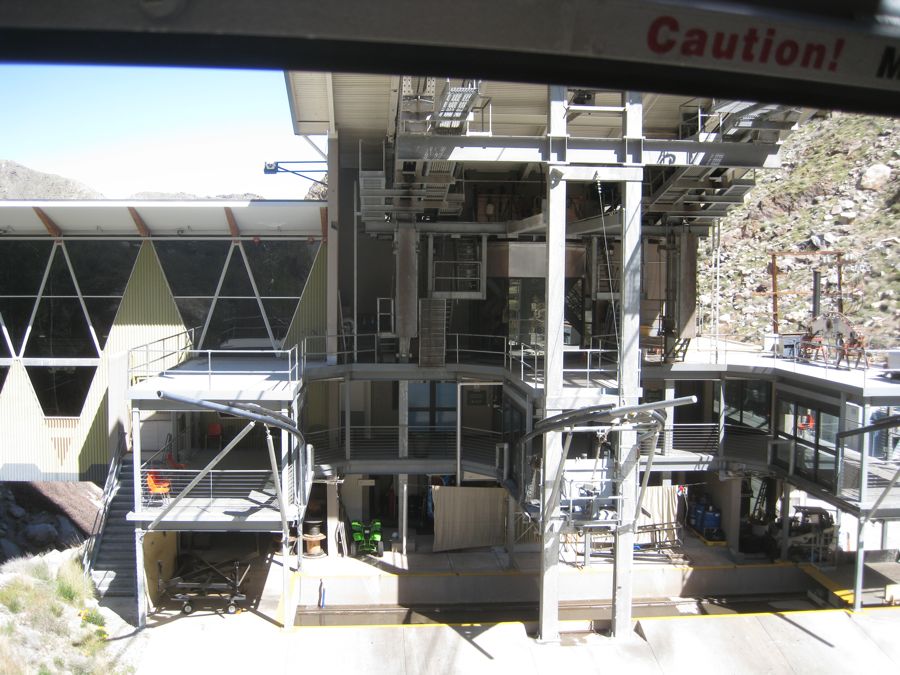
Loads of equipment makes everything work...

On our way up....Maximum existing traveling speed: 1,970 linear feet per minute. 21 mph

Amazing rock structures all the way up

The other car is going down the mountain... Weight (carriage, hanger and cabin) loaded: 22,000lb

Down they go... Maximum output of DC hoist motor: 1,100 HP or 1,350 KW
Continuous output: 675 HP 855 KW

The desert station seems very small from here

Little wires hold us up
Did You Know? - Historically wire rope evolved from steel chains which had a record of mechanical failure. While flaws in chain links or solid steel bars can lead to catastrophic failure, flaws in the wires making up a steel cable are less critical as the other wires easily take up the load. Friction between the individual wires and strands, as a consequence of their twist, further compensates for any flaws. This method of minimizing the effect of flaws may also be seen in Damascus steel, employing multiple folding or laminations.
80 Degrees Below And 40 Degrees Above

The snow is now visible. We could begin to see wild animals


Plants growing out of the rock
are quite interesting

Striations in the rock... Solid granite core
Did You Know? - Granite is an igneous rock and is formed from magma . Granitic magma has many potential origins but it must intrude other rocks. Most granite intrusions are emplaced at depth within the crust, usually greater than 1.5 kilometres and up to 50 km depth within thick continental crust.

Careful study reveal small snow-slides.

Cochella Valley below us
Did You Know? - Coachella Valley (pronounced /koʊ.əˈtʃɛlə/) is a large valley landform in Southern California. The valley extends for approximately 45 miles (72 km) in Riverside County southeast from the San Bernardino Mountains to the saltwater Salton Sea, the largest lake in California. It is approximately 15 miles (24 km) wide along most of its length, bounded on the west by the San Jacinto Mountains and the Santa Rosa Mountains and on the north and east by the Little San Bernardino Mountains. The San Andreas Fault crosses the valley from the Chocolate Mountains in the southeast corner and along the centerline of the Little San Bernardinos. The fault is easily visible along its northern length as a strip of greenery against an otherwise bare mountain.
The Chocolate Mountains are home to a United States Navy live gunnery range and are mostly off-limits to the public. In comparison to the "Inland Empire" (Riverside-San Bernardino area and the California desert), some people refer to the IE 's sub-region Coachella Valley as the "Desert Empire" to differentiate it from the neighboring Imperial Valley. Geographers and geologists sometimes call the area, along with the Imperial Valley to the south, the "Cahuilla Basin" or the "Salton Trough"
There is some contention as to the origin of the name. Early maps show the area as "Conchilla," the Spanish word for "seashell." Since the area was once a part of a vast inland sea, tiny fossilized mollusk shells can be found in just about every remote area. Local lore explains the change in the name from Conchilla to Coachella as a mistake made by the map-makers contracted to transcribe the data supplied by the Southern Pacific Railroad's survey party. Rather than redraw the expensive maps, the railroad chose to instead begin calling the area by the misspelled name "Coachella" rather than its traditional name "Conchilla."

Helicopters land on the yellow squares
to service the towers moving parts

No wind this day says the anemometer
Did You Know? - An anemometer is a device for measuring wind speed, and is a common weather station instrument. The term is derived from the Greek word anemos, meaning wind. The first known description of an anemometer was given by Leon Battista Alberti around 1450. They are also very easy to make as a project. Anemometers can be divided into two classes: those that measure the wind's speed, and those that measure the wind's pressure; but as there is a close connection between the pressure and the speed, an anemometer designed for one will give information about both.

We made it!!!
Lunch Time At 8000 Feet In The Sky

Bunnaford
and the bubbly.. A dangerous combination



Oops... Bunny was not wanting carrots for lunch

Look carefully into her eyes and there is Paul

Dining in the evening at Peaks Restaurant
Seriously, Sue Wanted To Volunteer For This Guys Seat Doing Down
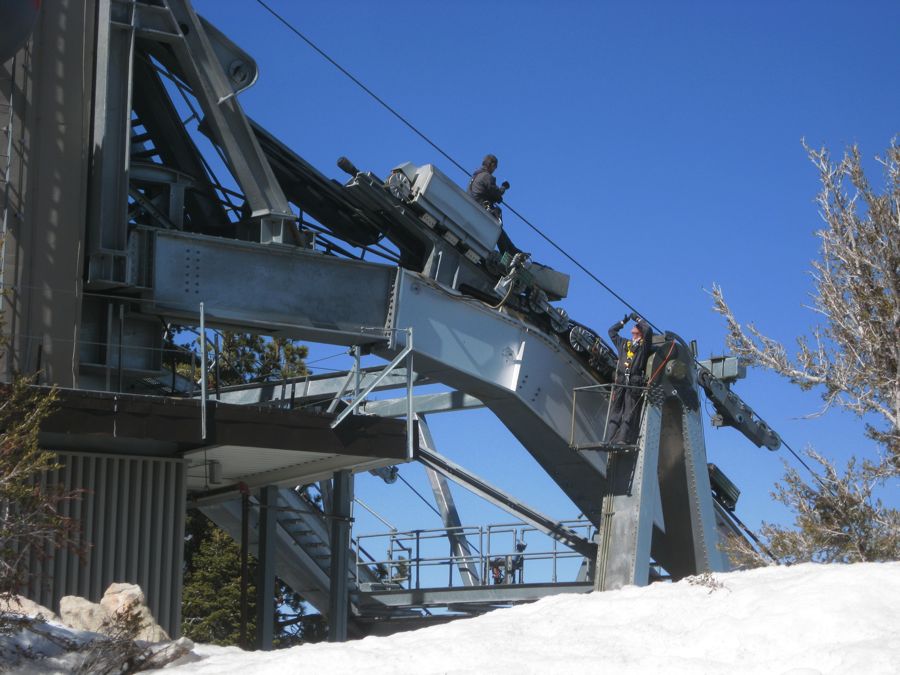
The cable inspectors ride in their respective locations

"Hell of a ride"
Inside It Was Warm And Quite Pleasant...

Someone said "Watch out for mountain lions"

"Boo... It's OK, I am stuffed"

Did You Know? - The cougar (Puma concolor), also known as puma, mountain lion, mountain cat, catamount or panther, depending on the region, is a mammal of the family Felidae, native to the Americas. This large, solitary cat has the greatest range of any large wild terrestrial mammal in the Western Hemisphere, extending from Yukon in Canada to the southern Andes of South America. An adaptable, generalist species, the cougar is found in every major American habitat type. It is the second heaviest cat in the American continents after the jaguar. Although large, the cougar is most closely related to smaller felines.

In a wine shirt often mistaken for bamboo
Time For An After Lunch Walk

The weather was excellent

Because of budget cuts, they could NOT afford a "K"
Did You Know? - Mount San Jacinto State Park encompasses the weathered granite summit of Mount San Jacinto at 10,834 feet (3,302 m) above sea level the second highest mountain range in Southern California. It is close to both Los Angeles and San Diego. It is accessible by the Palm Springs Aerial Tramway and lies on the Pacific Crest Trail.

Magnificent
view of a dead tree
... Or, is it a nig brown catapillar?

Watch out when these three are together...

A snow person out by himself
Did You Know? - A snowman is an anthropomorphic snow sculpture. They are customarily built by children as part of a family project in celebration of winter. In some cases, participants in winter festivals will build large numbers of snowmen

Look carefully and you can fine another lost snowman

Be careful of the snow bunnies
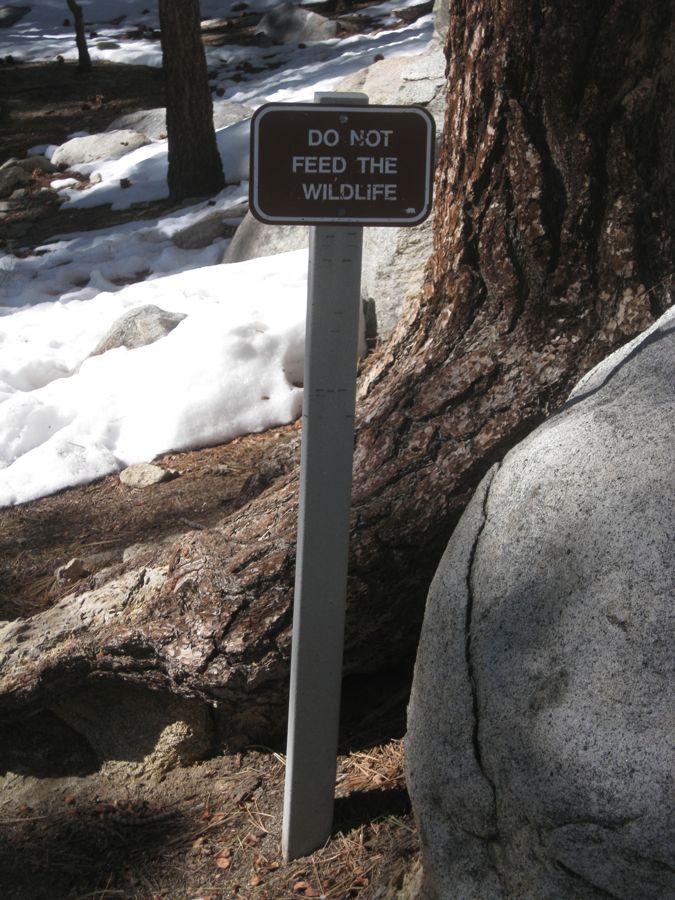
... and they are serious

Oh oh.. We fed her earlier

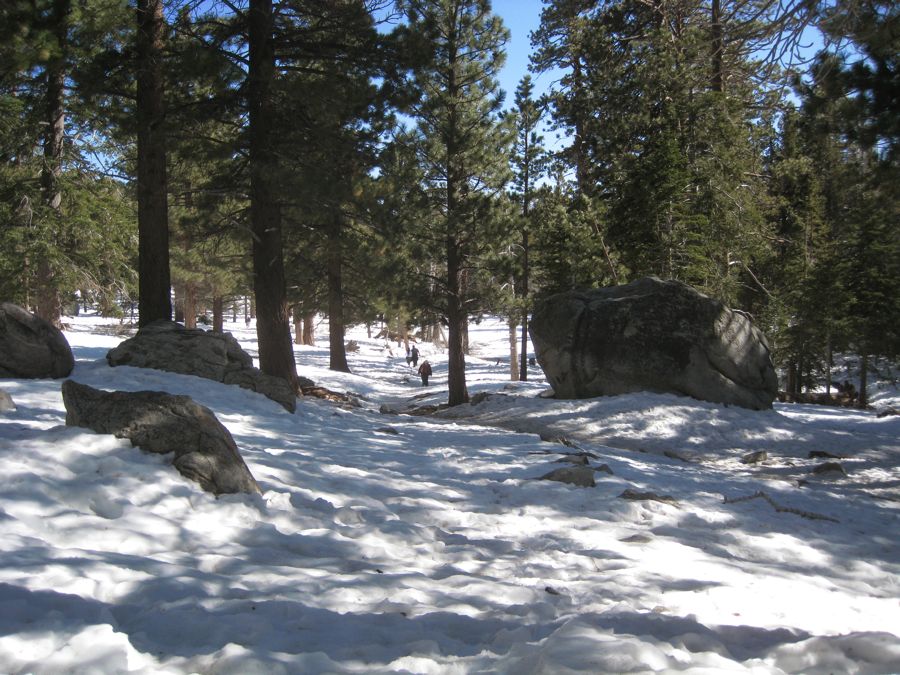
Yes... Those are crazy people out walking in the snow

Ground finders in action

"Let's go play in the snow?!?"
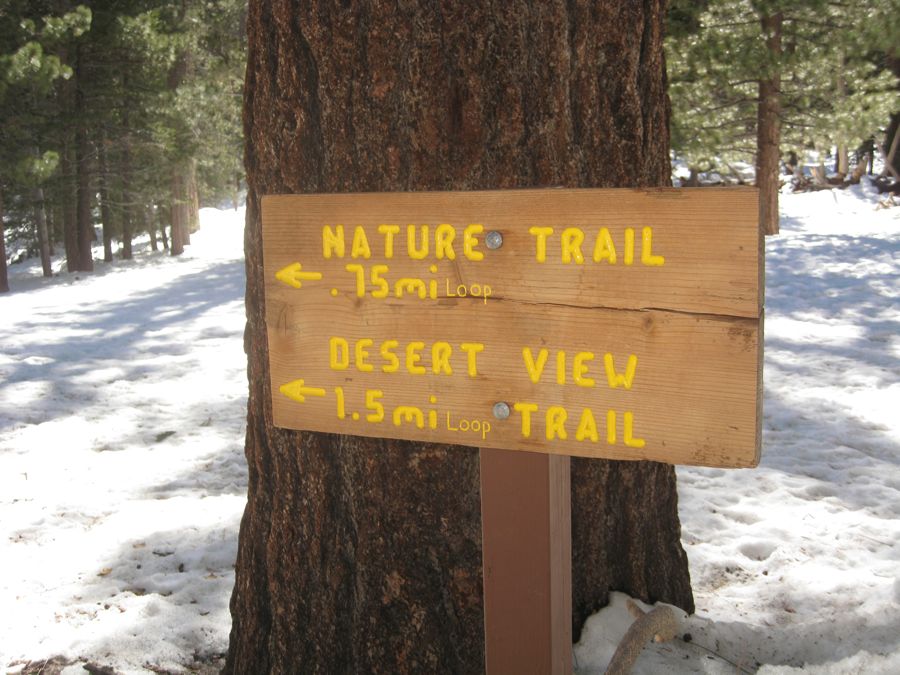
Nearly had a heart attack... Thought it said 75 miles

...Dapper Paul sporting his latest snow retardant jacket... Except, Sue got him with a snowball

Mr. Hollywood
Snow Baby Time

It's beginning to take shape

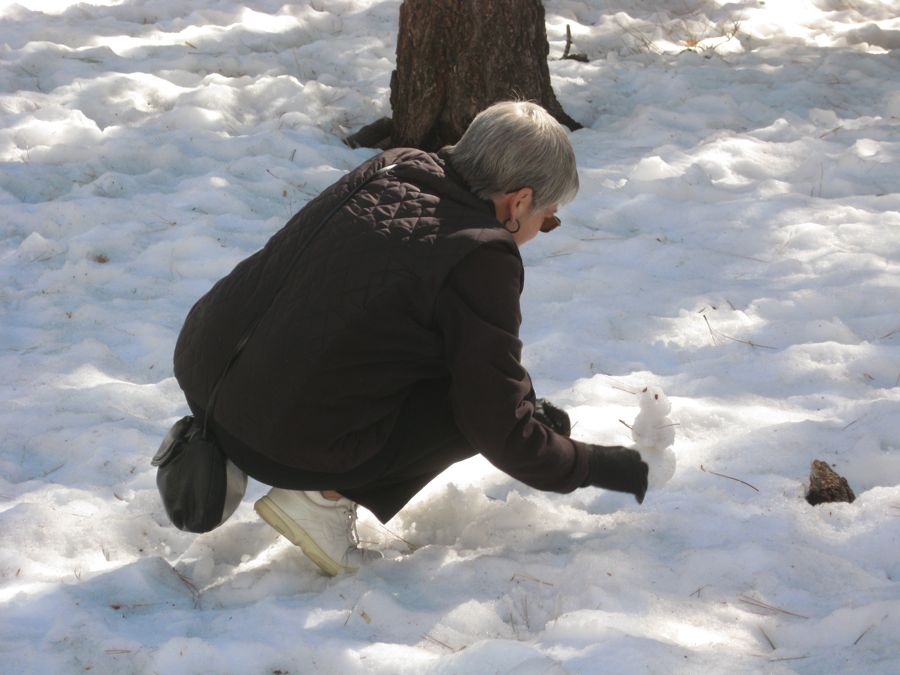
A snow baby being made
... Hope it does NOT follow us home

A snowmans funeral

Look deep out there

Bunnaford testing out the snowshoes
... So far so good


"OK, that's enough... Let's head back up!"

We did NOT realize how far we had walked down

Notice how blue the sky was!

Who is gonna be first???
Down The Mountain We Go
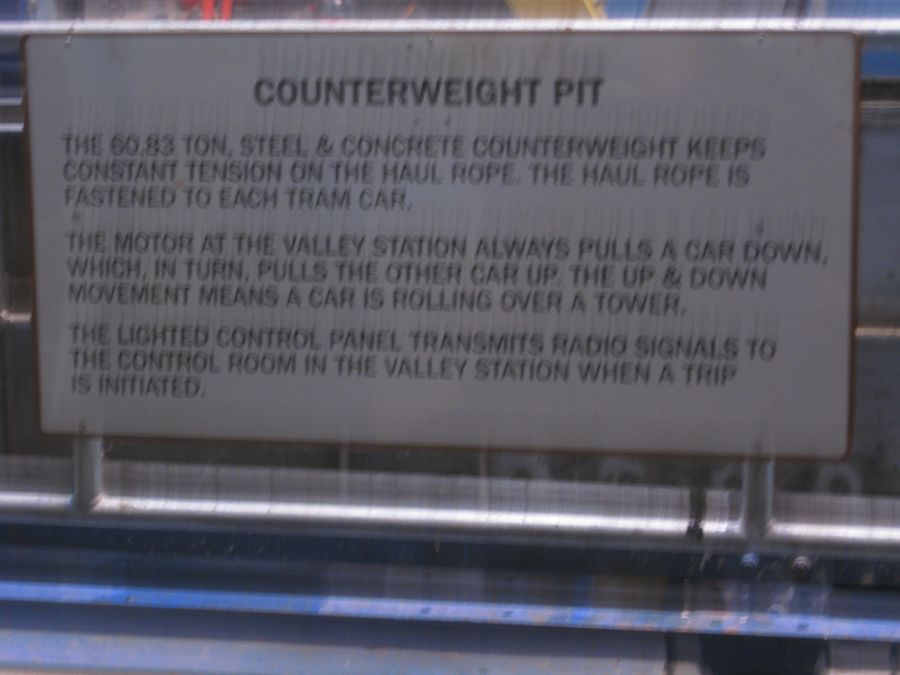
Darned thing kept moving

It moved up and down about 50 feet depending upon the loads in the cars

Making Arrangements For A Meeting

Hello... Mr. Real Estate man??

"I is ready to go... Can't I ride on the outside?"

We had better count them

Wild ride


Goodbye snow

Can you believe helicopters land on the platforms??
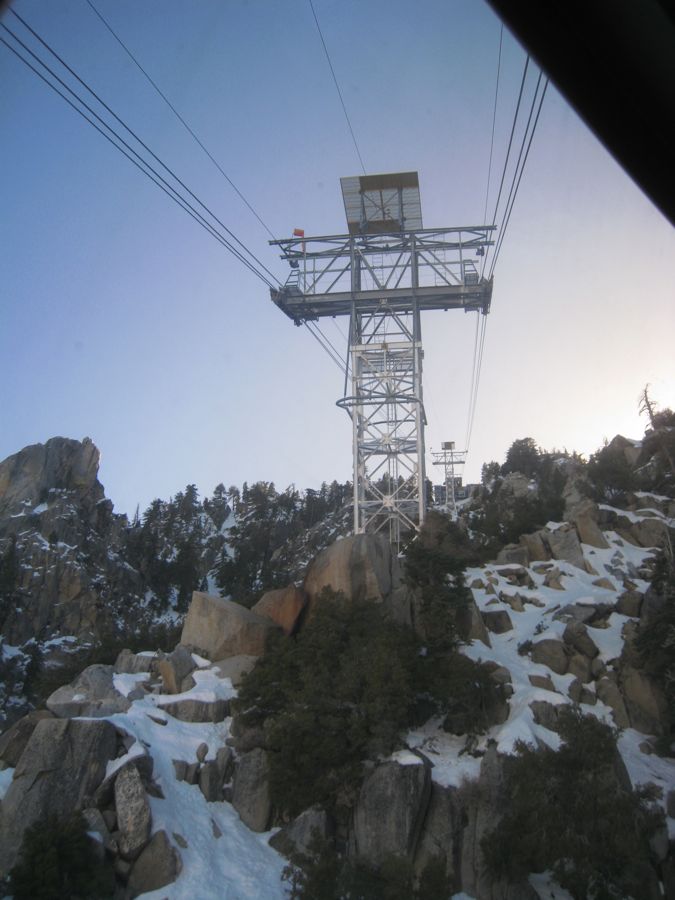

"Hang on
!!"

I is hanging!


Now we know where the snow goes



Lots of maintenance gear

Car dimensions: 8ft high inside 18ft in diameter

We kept it under 100 all the way down

Time To See Some Real Estate

Great view.... and the grass, tree, and mountain are OK also

On the course
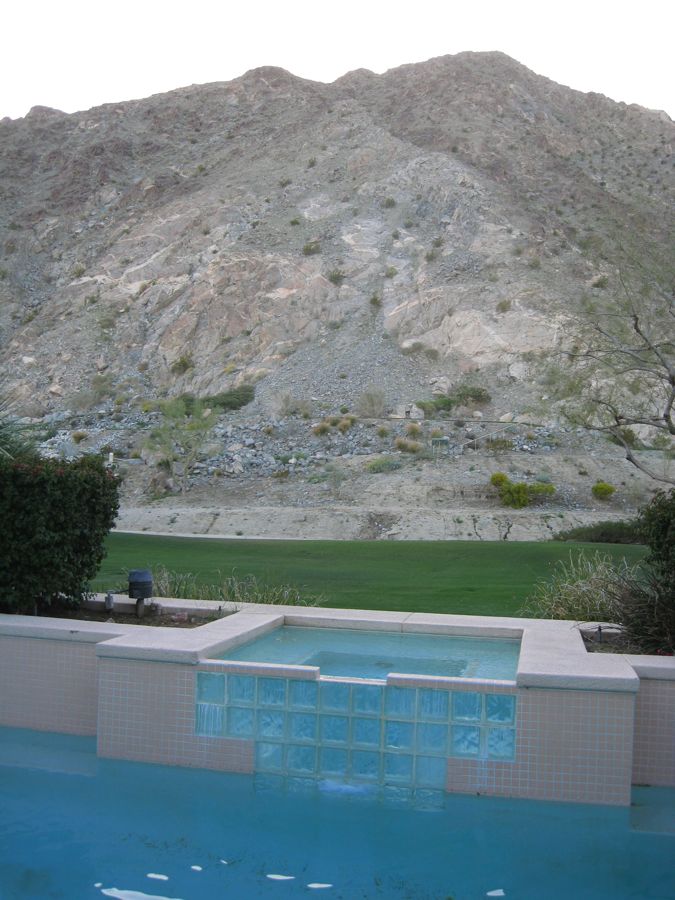
Naked in the pool could scare the golfers

Keep looking...
Heading For Home On The Palms To Pines Highway
Did You Know? - State Route 74 (SR 74), a part of the Pines to Palms Scenic Byway, is a mostly scenic highway in the U.S. state of California. It runs from Palm Desert in Riverside County westward to San Juan Capistrano in Orange County.
Route 74 passes through many parks and National Forests along its route. Some of these places include the San Bernardino National Forest, the Cleveland National Forest, the Ronald W. Caspers Wilderness Park, Lake Elsinore State Recreation Park, the Soboba Indian Reservation, Lake Hemet and the Santa Rosa Indian Reservation.

Amazing skies
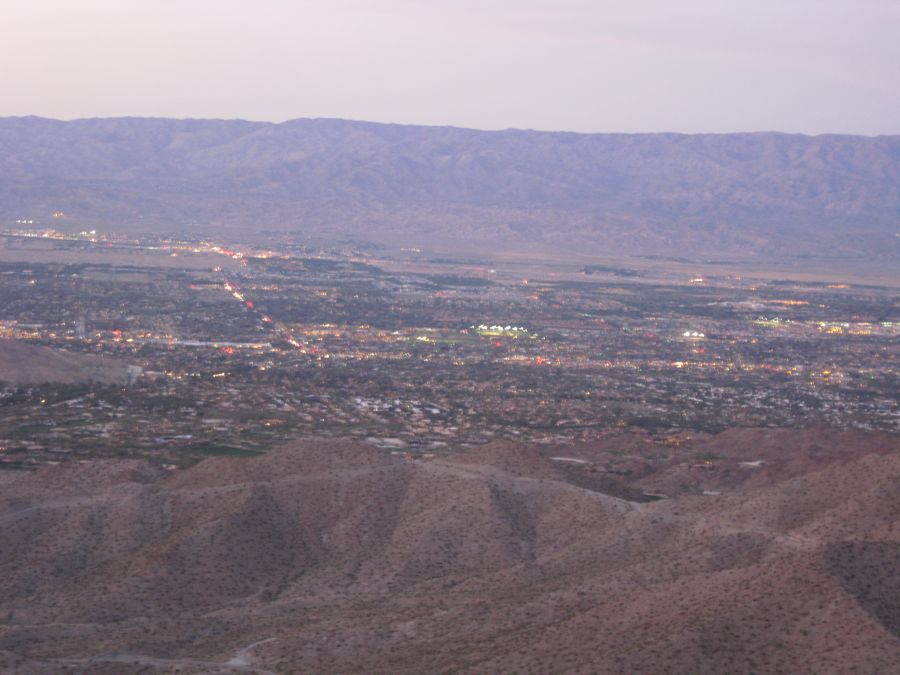
We took the Palms To Pines Highway
... The city is lighting up

Neat drive... better in the daytime

The desert below

On great Avalon
... Take us home

What Is The Next Adventure???
